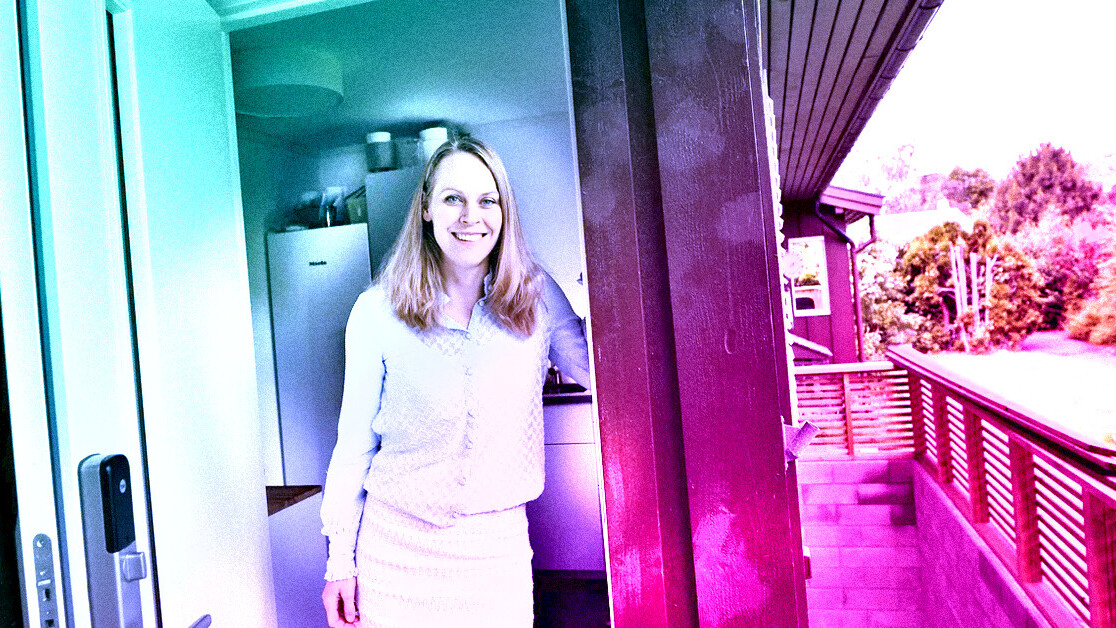
Did you know Ingrid Ødegaard is speaking at TNW2020 this year? Check out their session on ‘How to compete with tech giants’ here.
“Decoupling location from work can fundamentally change the way we build our societies.”
Ingrid Ødegaard’s statement is firm, and comes naturally when she talks. Not like a futurist’s vision, but rather based on hands-on experience from the way the tech startup Whereby has worked since long before Covid-19.
“We give people the ability to take the job with them, a possibility that has enabled big life changes for some. When people move back to their small home towns, it also affects those communities and helps them maintain a sustainable base of taxpayers,” she says.
Whereby, the video collaboration company from Norway, has seen a 30 times increase in its services in the last few months. Co-founder and Chief Product and Technology Officer Ødegaard reveals that it wasn’t a global pandemic or the fact that a video conferencing tool is the core of their business that made them become a “work from anywhere” team.
[Read: We asked 3 CEOs what tech trends will dominate post-COVID]
“In 2013, we were co-located, but we were forced to think differently when one of our colleagues wanted to move closer to his family, and we really wanted to keep him in our company. So he moved, and we adjusted.”
What does it take?
Whereby’s vision is “to give people freedom and flexibility to live and work where they thrive.” There are now 48 people in 17 locations across 6 time zones, delivering a simple solution for video meetings with paying customers in 150+ countries. They also have a passion to make meetings more fun, for example by letting participants react to the speaker with emojis.

“In the beginning, it was a lot about making those few working remotely feel included, and one of the things we did was to put up a big monitor and have a video room open all day,” she laughs.
Ingrid has a warning, too, for those not prepared for a certain imbalance that can happen when companies go partly remote.
“Be aware of the asymmetry, which can arise if only a few work remotely and you don’t invest properly in tools and culture. Then you might get it wrong.” Instead, her advice is to build a culture in which you always assume that someone will be remote.
Ødegaard explains how they have tried to replicate some parts of office life, like small-talk in meetings, shared coffee breaks, and chat-rooms. Team chat programs are crucial, according to Ødegaard.
“We have open group discussions in our chat group, visible for anyone, so that everyone can see and participate in the discussions – as you would if someone sparked a conversation at the office. It is crucial to have team chat as a secondary channel to video meetings,” she says.
6 tips for nailing remote work
- Replicate physical work habits
- Over-communicate in Slack, ensure information flows
- Know how to share and collaborate on documents
- Check-in with each other often!
- Take time for small talk
- Be humble, curious and ask questions
Trust is everything
Born in, and later demerged from, telecom company Telenor – who just announced a pivot to a “flexible work-strategy” for 20,000 employees – Ødegaard gladly shares her advice.
“What did you experience that others can learn from?”
“Trust is maybe the biggest challenge for leaders, while discipline and the ability to be self-driven is key to employees. Management style needs to be very trust-based and focussed on coaching; you have to set goals and expectations around clear deliverables and outcomes,” she says.
She makes it sound so easy… But for leaders from a traditional hierarchical organization, it can be hard to admit that instead of knowing everything as a leader, you rather need to facilitate a team of experts, so that they have the necessary tools and are able to deliver, while you coach them on.
“We have adopted humility as an essential skill for our leaders. Things are changing so fast, you have to ask, read up, admit that you don’t understand everything. I ask stupid questions all the time.”

Some facts: Whereby recently surveyed 1500 business owners and decision makers and found that:
- 53% think working remotely has increased overall productivity, while 17% feel company-wide productivity has decreased
- 82% of businesses are considering changing their future working practices to allow more staff to work remotely
- 51% of employees expect to be allowed to retain at least some flexibility to work remotely once lockdown is lifted. 13% want to be allowed to work entirely remotely
- 66% of employees feel that they display a different persona on video calls the one they present in the office.
This article was originally published on the Whereby blog.
Get the TNW newsletter
Get the most important tech news in your inbox each week.





